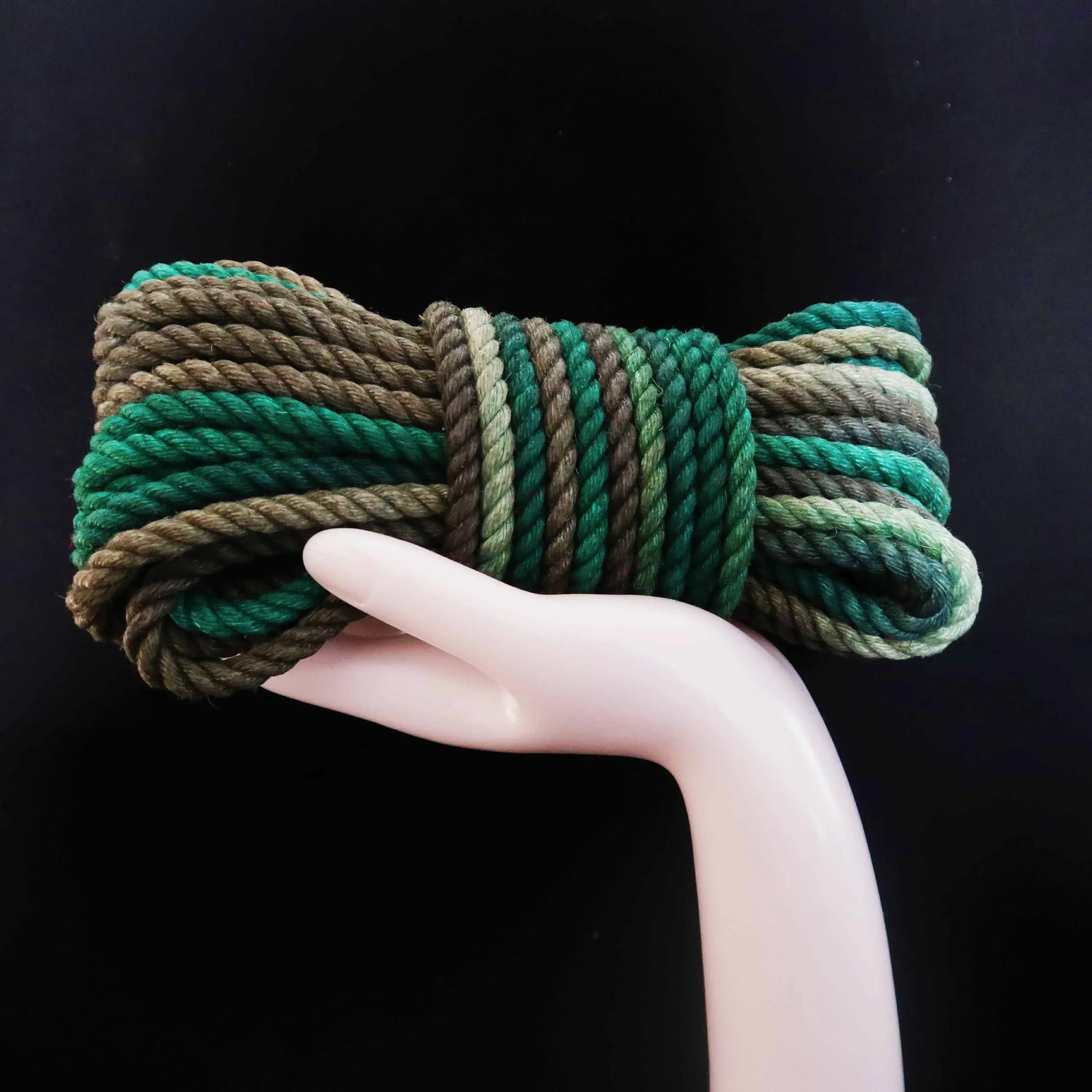
Shibari is a beautiful and ancient art that’s capturing more and more hearts. But before diving in, picking the right shibari rope is key—it’s what makes the difference between an average session and an exceptional one. Understanding the types of rope bondage materials available will help you choose a good bondage rope that suits your needs. The material, length, and diameter of your ropes will shape not only the look of your work but also its safety and comfort. Let’s break down what you need to know to find your perfect match!
1. Choosing the Right Bondage Rope Material
The type of rope you choose sets the stage for how your shibari experience will feel. Each material has unique qualities, so here’s a rundown of popular options and when to use them:
-
Jute Rope: A top choice in shibari! Jute rope is soft, has a good grip, and creates a unique texture for a natural, warm look. Great for suspension work.
-
Hemp Rope: Another popular pick, hemp rope has all the benefits of jute but is even softer. Perfect for suspension and sensitive skin.
-
Cotton Rope: Cotton is familiar, soft, and stretchy, making it ideal for lighter, beginner-level shibari. A great pick for beginners or nervous tops—just avoid using it for suspension.
-
Bamboo Rope: Luxuriously soft, bamboo rope is the “fancy lingerie” of shibari ropes. With natural antibacterial properties, it’s great for sensitive areas, crotch ties, or wearing under clothes. Plus, we offer options with sparkle or electro-conductive threads. Not suitable for suspension, though.
-
Synthetic Rope: Durable and easy to clean, synthetic rope offers great support and is perfect for more advanced techniques. However, it lacks the natural softness of jute or hemp.
2. Rope Length & Quantity
Rope length is important to match your style and needs in shibari. You want something long enough to complete your designs, but not too long, so it’s manageable.
- Standard Length: 8-10 meters is the most versatile choice, letting you go from simple binds to complex ties.
Recommended Rope Quantities: Here’s a guide to how many ropes you’ll need based on popular binding styles:
-
Basic Upper-Body Binding (like takate-kote): 2-3 ropes.
-
Full-Body Binding (Floor Work): Generally, 4-5 ropes are enough for a complete look. Check out our Essential Kit for everything you’ll need.
-
Suspension Binding: At least 6 ropes for solid support and flexibility. We recommend our Advanced Kit or Master Kit—the Master Kit has all you need for any suspension.
-
Leg Binding (single- or double-leg): Typically, 1-2 ropes should do, depending on your design’s complexity. We recommend the Start Kit for these ties.
-
Simple Binding (wrists or ankles): Only 1-2 ropes are needed here, and the Start Kit works great.
Find Your Perfect Rope
| Scenario | Recommended Product | Expert Advice |
| Beginner Practice | Stater Set 10m×1 + 5m×2 (Jute) | • Ideal for basic ties (e.g., Takate-kote) • Free:traditional furoshiki |
| Artistic Photography | Essential Set 10m×4 + 5m×2 (Jute) | • 4-5 ropes for full-body floor work • Comes with conditioning wax for enhanced sheen |
| Suspension Training | Master’s Set | • Free:traditional furoshiki+ safety carabiners • setup for advanced suspension |
| Sensitive Skin/Soft Feel | Hemp Rope | • Softer than jute with less prickling • Natural oil scent fades over time |
| Bamboo Rope Set | Bamboo Rhythm Set 8m×5 (Bamboo) | • Hypoallergenic & antibacterial • Floor use only (no suspension) |
| Outdoor/Water Use | Boundary-Breaking Paracord Set | • Waterproof & mold-resistant (+20% wet strength) • Optional fluorescent colors |
Keep in mind that these are just guidelines. You might need more or fewer ropes based on your design, detail level, and the model’s body size. To be precise, sketch your design and measure in advance!
3. Rope Diameter
Rope diameter directly affects both the feel and the appearance of your work. Thinner ropes allow for detailed work, while thicker ropes offer more strength and support.
-
6mm: This is the gold standard for shibari. Use 6mm for almost anything—intricate knot work, erotic macrame, suspension, and more.
-
4mm: Perfect for detail work! 4mm ropes are ideal for tying hair, fingers, toes, and other delicate areas. Great for adding accents to larger ties or sneaking under clothing.
Before you begin, take time to explore your rope options based on your needs and preferences. Safety comes first—learn proper techniques and follow precautions to make your experience with shibari both enjoyable and safe. Embrace the beauty of this art form and enjoy your journey into the world of shibari!

